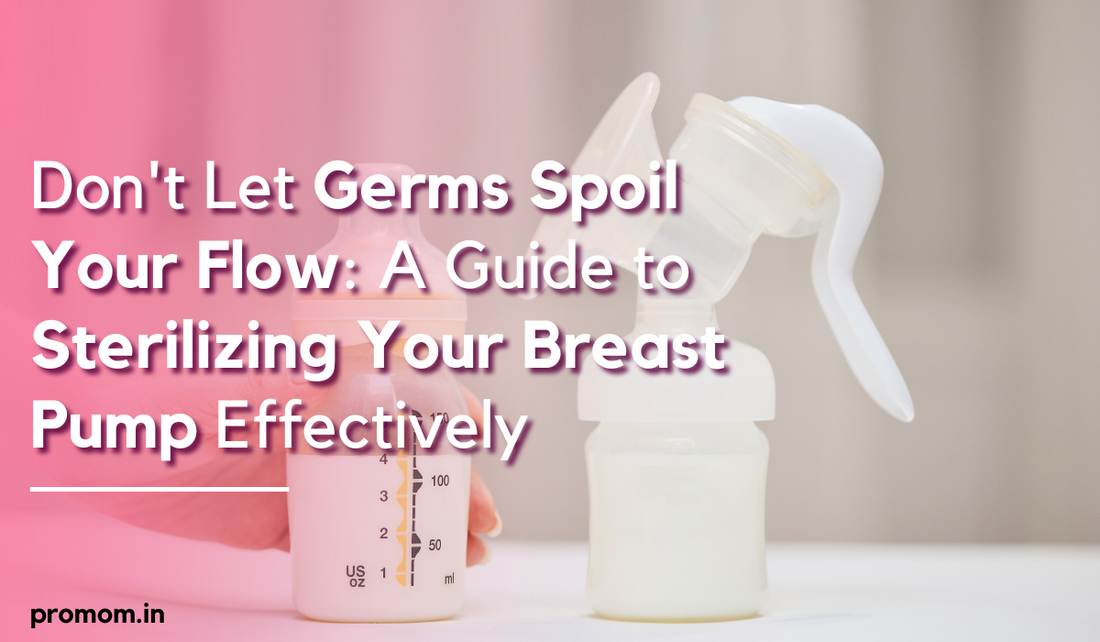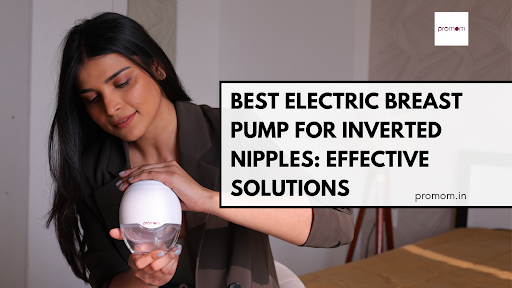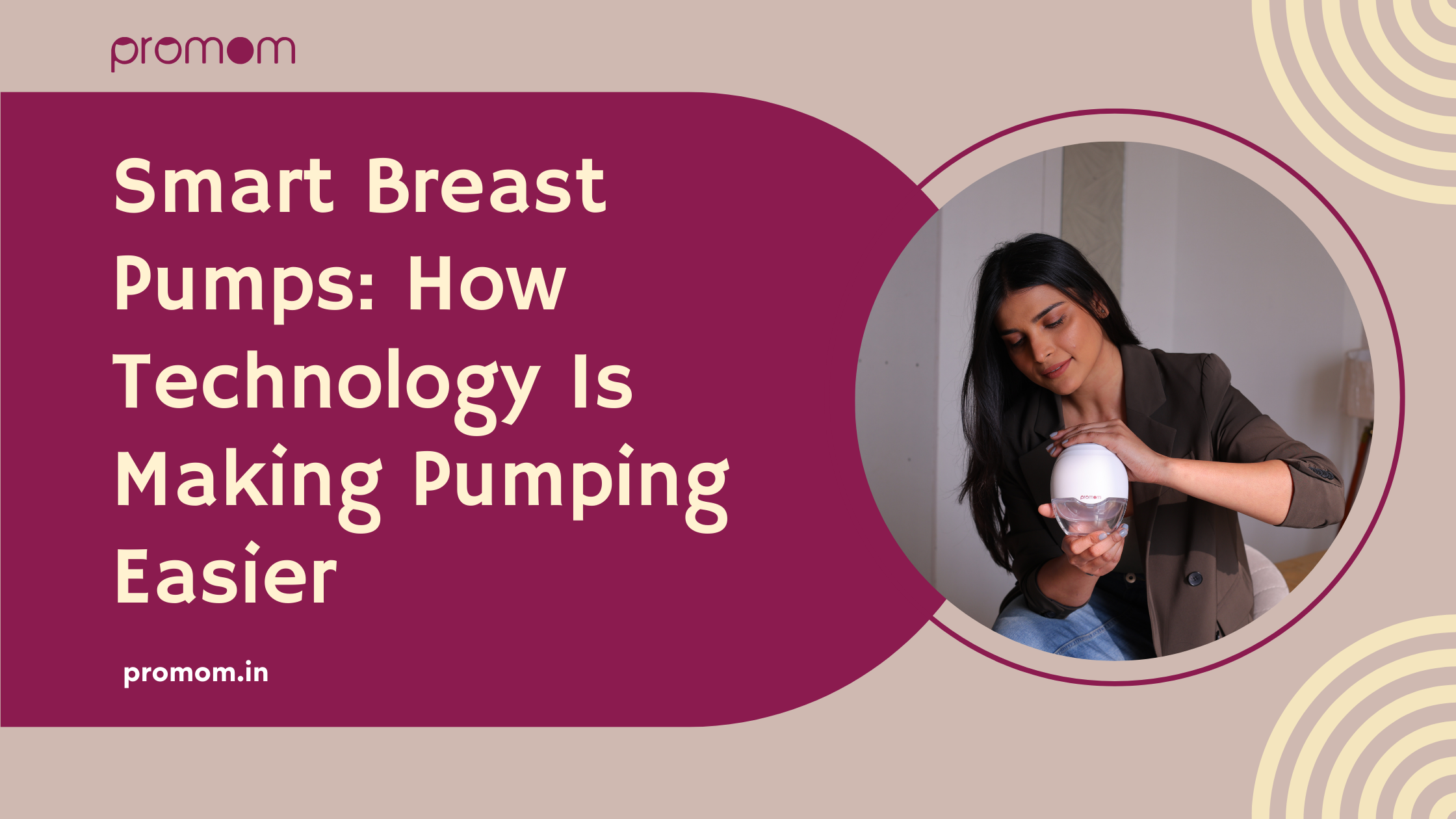
Don't Let Germs Spoil Your Flow: A Guide to Sterilizing Your Breast Pump Effectively
The breast pump stands as your essential accessory for sustaining lactation and ensuring your baby receives needed nutrients postpartum. Your breast pump acts as a vital baby tool, but it can develop dangerous bacteria and mold and harmful germs if you do not sanitize it correctly. The practice of breast pump sanitation remains vital for delivering your baby the purest breast milk possible.
This guide shows you how to properly use breast pump sterilizers for maintaining clean breast pumps while ensuring your baby's safety. The following protocols will help you make breast pump sterilization a seamless and efficient part of your daily process.
Why Sterilizing Your Breast Pump is Crucial?
Your pumps contact your milk during use, so they provide excellent conditions for bacteria growth when they lack proper cleaning. Sterilization functions as an essential step since some bacteria survive normal cleaning methods. The procedure eliminates dangerous bacteria and viruses that might endanger your newborn.
Harmful microorganisms together with other germs that include E. coli and Staphylococcus aureus exist naturally in every environment. Your expressed breast milk remains at risk of contamination when you fail to control these pollutants. Pump sterilization sets up a barrier against infections while giving parents a sense of security.
How to Sterilize Your Breast Pump?
You can easily learn the process of breast pump sterilization despite the perception of difficulty. Some practice with proper tools allows anyone to fit this process into their daily operations.
1. Use a breast pump sterilizer
The breast pump sterilizer stands as the easiest method for maintaining sanitary conditions in pump parts. The steam-based technology inside sterilizers effectively cleans every small breast pump component from breast shields and valves to bottles. Sterilizers operate quickly to finish their cycle between 10 and 15 minutes.
Follow your breast pump manufacturer's guidelines to learn about water amounts and precise component placement. A single run on a sterilizer can clean numerous breast pump accessories concurrently, which saves you time and reduces manual work.
2. Boil water before using the stovetop method
The process of using boiled water serves as a dependable method of sterilization for your breast pump. The parts need to be submerged in clean water while boiling for five to ten minutes according to this method. When using this method, you need to check that both parts are completely submerged while using a sufficiently large pot.
The parts must stay submerged in boiling water for the complete amount of time required for complete sterilization. Transfer the dried components by using tongs or a clean fabric onto a clean work area.
3. Sterilizing Bags for Microwaves
The microwave utilizes sterilizing bags specifically made for this purpose, which serves as a commonplace method for users. You can use these sterilizing bags as a convenient method to easily clean your breast pump parts with minimum fuss. You need to place the pump parts with a small amount of water inside the sterilizing bag before placing it into the microwave for its advised duration.
Fast-moving Parents who need rapid solutions can benefit from sterilizing bags that feature portability and minimal complexity in usage.
4. Cleaning Between Use
A complete wash of your breast pump prior to sterilization ensures that germs do not attract to milk residue or buildup. Scrub all parts with a bottle brush under warm water containing dish soap. You need to thoroughly wash all components to completely remove remaining soap. Place the washed breast pump parts in a sterile location until you can perform the sterilization process to prevent bacterial growth.
Daily cleanliness practices simultaneously guard your baby from infection and extend the operational life of your breast pump. These optimal practices will help keep your pump working properly after you sterilize it.
Best Practices for Keeping Your Breast Pump Clean
1. Wash Your Hands First
You should wash your hands extensively with soap and water right before you handle your breast pump components. The transfer of bacteria remains arrested through this practice, which safeguards milk purity.
2. Clean After Every Use
Adequate breast pump maintenance requires you to separate its pieces after sessions while cleaning milk-contacting elements with warm soapy water. Dry all components in the fresh air on a sterilized surface made of towel or drying rack.
3. Store in a Clean, Dry Place
The clean pump parts should be placed inside a sealed container or bag when immediate sterilization is not practical to shield them from airborne contamination and moisture exposure.
4. Replace Worn-Out Parts
You must check your breast pump for signs of wear when you routinely inspect it. The use of valves, membranes, and tubing due to their natural degradation leads to bacteria accumulation. The manufacturer’s instructions should provide the correct timing for component replacement.
Conclusion
Breast pump sterilization remains the most vital procedure for protecting your baby's breast milk from harm. Make sterilization part of your daily routine by choosing among sterilizing bags and boiling water or breast pump sterilizers. Investing in a quality sterilizer combined with following these procedures ensures your breast pump stays germ-free and prepared for your newborn.
Explore Promom to find the market's best breast pump sterilizers when seeking a convenient breast pump sanitization solution.


